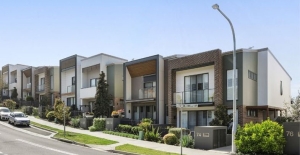Displaying items by tag: SEEP
NSW Planning Minister trashes plans to improve liveability
The NSW and Australian governments still want a rapid increase in population This will place great pressure on new outer suburbs and areas near public transport that have been earmarked to accommodate the demand for new housing.
There was optimism that a directive issued by former Planning Minister, Rob Stokes of planning principles would have made new suburbs more pleasant places to live. They might have had more parks and street trees that would reduce the ambient heat and buildings designed with sustainability principles. They would help NSW meet the ambition of net zero by 2050 considering that buildings account for 25% of emissions.
The principles also provided that resilience and risk management from climate change be key considerations so that development in floodplains or close to bushland would be controlled. These principles would be applied throughout all NSW cities and towns. Recent events have demonstrated their importance.
The details for the implementation of the principles are set out in a draft Design and Place State Environment Planning Policy (SEPP). It has been developed by the Department of Planning in collaboration with architects, planning experts and researchers.
In a shock announcement, the new NSW Planning Minister, Anthony Roberts, has decided to bow to the developer lobby and revoke the principles and the Design and Place SEPP. What happens now is unclear.
Increase in density
The draft policy was not all good. It included an Urban Design Guide that established objectives for quality urban spaces. It was intended to advise applicants and their design teams, who prepare development proposals, on expectations and to assist in assessment of proposals (by local or state government).
There is a sting in the tail of the list of objectives. They include a blanket increase in density to 30 dwellings per hectare in areas within 5 min walk to local shops or near to public transport and 15 dwellings per hectare everywhere else. The latter equates to 666 m2 average area per dwelling including space for roads, parking, parks etc. Implementation can occur by mixing apartment buildings into low density areas.
The reasoning stated in the guide is the creation of more vibrant urban areas. That seems highly unlikely. Current LEPs would be ignored. Character and heritage would be lost in the process if the developments that have sprung up all over Sydney are anything to go by.
Push for spot rezonings
In another backward move the government has issued a discussion paper about a proposal to allow developers to request spot rezonings. Councils would have a limited time to assess these applications.
The authority of councils and community wishes determined by strategic plans would be overtaken by developers making these requests. This goes against the objective that ensures strategic planning is the foundation for all decisions about potential land-use changes. The pressure to assess applications within a fixed time frame will compromise the ability of councils to assess how a proposal fits into the area’s strategic framework and take into account other developments in the process of construction or under assessment.
The planning system is more flawed than ever. More details of these changes are described in FOKE’s March 2022 newsletter.

